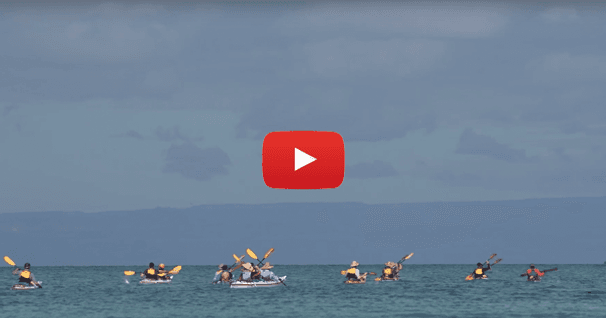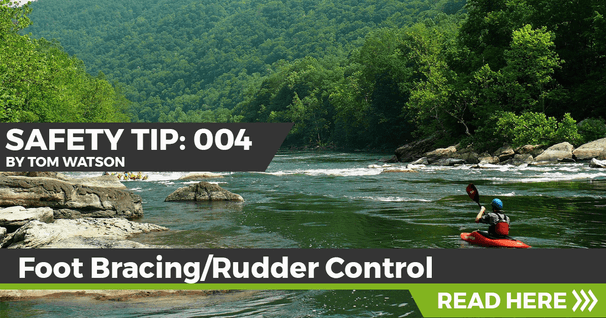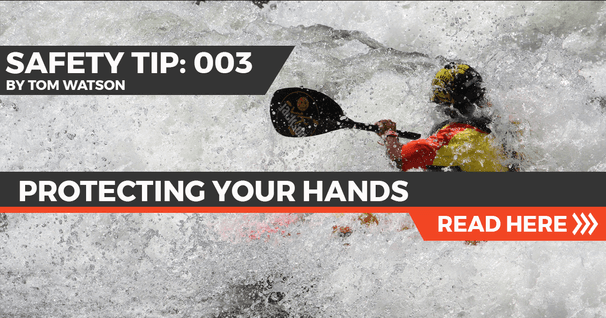Avoiding Accidents
My dad was a quality control engineer. A sign in his office read:
"Accidents don't just happen; they are caused! The villains are speed (doing a task too fast), inattention, and not following the rules."
I've been lucky. In more than 30 years of guiding canoe trips on some of the toughest rivers in northern Canada, I've never needed more than band-aids and Tylenol. I believe I owe my good luck to a plan that emphasizes avoiding accidents.
CLIFF'S PLAN
DOWN-PLAY YOUR ABILITIES
I have been paddling since I was 11 and I've taken many canoeing courses. Still, I consider myself just an intermediate level whitewater paddler. Some skilled friends call me an expert. I am flattered by their confidence, but I prefer "intermediate". Why? Because downplaying my skills keeps me humble and out-of-trouble!
SLOW DOWN AND LIVE
Most accidents occur late in the day when people are pushed and tired. Solution? Camp early if you can; fuel up on high energy snacks and take frequent breaks if you can't. Admittedly, I've paddled as long as 16 hours to make up lost time, but this was before there were satellite phones and aircraft radios. Today, communication is a button push away.
FOLLOW THE RULES!
The most common accidents on northern rivers are capsizes due to bee-lining across huge bays, running rapids without scouting them and not wearing a life jacket. These are all rule-breakers!
GOOD GEAR HELPS LEVEL THE PLAYING FIELD
Examples: I give everyone a detailed equipment list they must follow to the letter. Canoes are equipped with padded portage yokes, glued-in knee pads, full spray covers, tracking lines, sponge and bailer. Tents have plastic ground cloths and are designed to withstand 50 mile per hour winds. Every canoe carries a map set and compass.
BEGIN EACH DAY WITH TRAINING
Each morning we review white-water maneuvers. Teams must perform snappy pivots and side-slips and backpaddle in a straight line. We practice forward and back ferries, eddy turns and peel-outs. These every day warm-up sessions-in loaded canoes-develop skill and confidence.
SCOUT AND CHOREOGRAPH RAPIDS
When rapids loom ahead, we put ashore and tie up our canoes, then everyone scouts the rapid and choreographs moves. We follow an established running order. I lead and model the moves. Canoes are spaced close enough to see and mimic the route of the boat ahead, far enough behind it to take evasive action. Safety gear goes in the drag boat. Rationale: it's easier for the last canoe to catch a capsized craft than for the lead boat to paddle back upstream to it. Everyone knows the common river safety hand signals-Stop, Go Left, Go Right, Go Center, Help, Eddy Out.
DEVELOP A RELIABLE BACKFERRY
A controlled backferry enables you to edge heavily loaded canoes around the inside of river bends away from huge waves, set confidently into eddies and mark time to appraise the dangers of obstacles ahead.
Whitewater sport boaters dismiss the backferry as a last ditch effort to save the day. Instead, they spin their hot little boats bow upstream (forward ferry) and power ahead. Try this in tight quarters with a loaded 17 foot canoe and you'll swim!
RESPECT THE VICTIMS OF A CAPSIZE
Outwardly, victims of a capsize are confident; inwardly, they are embarrassed and will be gun shy for the rest of the day. They should change clothes now, even if the weather is warm. If nothing else, dry clothes will soften the sting of humiliation. Later, in camp, when everyone has rested, you can analyze the capsize. Afterwards, the incident is best not mentioned again.
WAIT FOR GOOD WEATHER
The book, "Into Thin Air" reveals the high price you may pay if you forge ahead when you should stay put. Better to hunker down till the weather improves, even if the wait plays havoc with your schedule. Summer days are long in northern Canada-on a nice day you can double or triple your planned miles if you paddle from dawn till dark. Experienced paddlers plan one down day in five for the unexpected.
BRING A NETTED BUG TARP THAT WILL ACCOMMODATE THE CREW
Bugs can drive people batty and send them to their tents where they will hole up till morning then emerge with a bad attitude that will remain all day. Some years ago I worked with Dan Cooke (Cooke Custom Sewing) to design a fully netted tarp that can withstand high winds on the tundra. It is the most valued item on my canoe trips.
BRING TOOLS TO CLEAR PORTAGES
Canadian portages are seldom marked or maintained. A folding saw and hatchet are the minimum you'll need for clearing debris. Mark confusing trails with colored plastic flagging (available at hardware stores). Collect the ribbon before you move on.
An unknown portage should be scouted and flagged before you carry any gear across. Carry packs first, the canoe last. If you double-pack, stack the second pack on top of the first and use a tumpline. Falls follow when you can't see your feet, so don't carry anything on your chest. Leave two paddles with the canoe in case you discover a sneak route to the river.
Cliff Jacobson is a professional canoe guide and outfitter for the Science Museum of Minnesota, a wilderness canoeing consultant, and the author of more than a dozen top-selling books on camping and canoeing. www.cliffcanoe.com
Related Articles
Whenever you're paddling, there's safety in numbers and so it's generally not a good idea to paddle…
River obstacles are serious hazards on any waterway - from placid, slow-moving streams to raging,…
Firm foot support is key to proper kayak posturing in the cockpit. Bracing your feet while paddling…
Protecting or shielding your hands from the elements while kayaking makes gloves and other…



